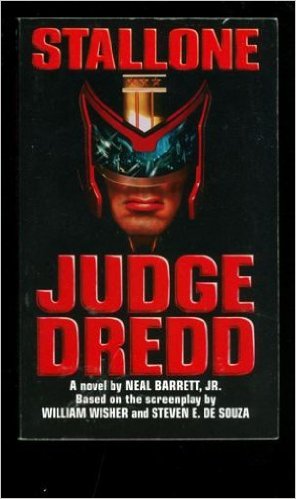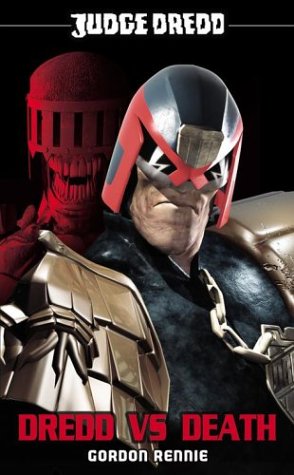Another of the columns written for Bookgasm.com in 2008:
 First off, “Blighty” is a slang term for England that comes from a Hindustani word meaning “foreign.” I looked it up so you don’t have to.
First off, “Blighty” is a slang term for England that comes from a Hindustani word meaning “foreign.” I looked it up so you don’t have to.
Second, did you know Ol’ Vilayati has a comic book industry all its own, with an original roster of homegrown heroes, comic book titles and formats. (Being American and the world revolves around me, it wasn’t until much later, thanks to the reportage of fan publications like Roy Thomas’ Alter Ego, published by TwoMorrows, that I began to learn just how extensive was native comic book publishing in the years after World War II; not only in England, but France, Canada, the Philippines, Japan, Australia, and Mexico, to name a few off the top of my head.) British comics, which date back to the 1880s, consisted largely of weekly magazine-sized publications with names like Beano, Dandy and Eagle, featuring humor and adventure stories aimed at kids. In 1977, 2000 A.D. was launched, introducing in its second issue a feature called Judge Dredd, created by John Wagner and Carlos Ezquerra and (British) comics weren’t, as people in comics like to say sneeringly, “just for kids anymore!”
This hardcore, by-the-book cop who was empowered to shoot down jaywalkers if he thinks them a danger, was set in a bizarre 122-years in the future society consisting of massively overcrowded Mega-Cities dotting a radioactive-wasted Earth full of mutants, aliens and savage inhumanity. In this overpopulated, insane world, cops are judge, jury and executioner. Dredd doesn’t just live the law, he, as he says “is the law!” Dredd was a hit and made 2000 A.D. a bestseller, which in turn elevated many of the other features sharing the magazine with Judge Dredds to hit status, including Robo-Hunter, Tharg’s Future Shocks, and Strontium Dog. It also made stars of many of its writers and artists (Alan Moore, Brian Bolland, John Wagner, Alan Grant, Kevin O’Neill, Grant Morrison, Mark Millar et al) there and in the ‘80s and ‘90s British Invasion of American comics.
Virgin Books published nine Judge Dredd novels around the time of the oft-and often-justifiably-maligned Sylvester Stallone Judge Dredd (1995) movie, but, much like the film, the books didn’t go over with the public. (The movie barely made a ripple; the action figures were remaindered before the last reel had run and Judge Dredd disappeared from the mainstream American consciousness except as the punchline to another Stallone joke. At the time, I was editor of the DC Comics licensed Judge Dredd comic book, including the movie adaptation drawn by Dredd co-creator Ezquerra.)
The movie was novelized in Judge Dredd by noted science fiction and fantasy author Neal Barrett, Jr. (based on a screenplay by William Wisher and Steven E. De Souza). The story, Dredd’s downfall and his hunt for his evil clone (played by Armand Assante*) who’s responsible is well written and Barrett, a consummate professional, does what he can with the material at hand. But, as with many such adaptations, the end result can only be as good as the source material. And little, fan-boy things rankle me as a reader. Take for instance, this simple passage: “Even if he could make a wild guess at the Chief Justice’s reasons, Dredd knew he’d probably be wrong. Fargo’s mind was like one of those antique boxes. The secret in the first box was another box. And within that box…” Abstract-poetic thought from Joe Dredd? I don’t think so.
 Also, readers would be hard-pressed to find the British sensibility that informed the original comic series—that, in fact, made it work at all—in either the movie or novel. Dredd’s Mega-City One was always clearly identified as being New York (and most of the rest of the northeast corridor), but its stories were based on contemporary British experience, a reaction to economic troubles and a sharp turn to the Conservative Right, leading to Margaret Thatcher. In this case, however, Dredd was clearly a product of the very American Clint Eastwood/Man With No Name/Harry Callahan mold. (No one knows what Rob Schneider was supposed to be.)
Also, readers would be hard-pressed to find the British sensibility that informed the original comic series—that, in fact, made it work at all—in either the movie or novel. Dredd’s Mega-City One was always clearly identified as being New York (and most of the rest of the northeast corridor), but its stories were based on contemporary British experience, a reaction to economic troubles and a sharp turn to the Conservative Right, leading to Margaret Thatcher. In this case, however, Dredd was clearly a product of the very American Clint Eastwood/Man With No Name/Harry Callahan mold. (No one knows what Rob Schneider was supposed to be.)
More on point were those Virgin novels, many of then written by 2000 A.D. veterans like David Bishop and Dave Stone, including one book by Dredd co-creator John Wagner. In 2003, Britain’s Black Flame Books acquired the 2000 A.D. license, eventually publishing nine new Dredd novels over the next four years. The first was Dredd Vs. Death by Gordon Rennie, another veteran Judge Dredd scribe (based on the storyline of a Xbox game by Rebellion Studios). Rennie is too good a writer to let the one-dimensional aspects of a videogame confine his story. He takes the reader through this futuristic world and its Draconian legal system with care and attention to continuity and character, his Dredd far more reactionary than Barrett’s thinking man’s cop (well, y’know, in comparison). This action-packed adventure takes Dredd and his colleague, the psychic Judge Anderson, on the hunt for the Death Cult responsible for letting loose a virus in Mega-City One that turns people into vampires. And, as any good Death Cult will do, this one summons the four Dark Judges to our realm, pitting Dredd and company against Death, Fire, Fear and Mortis in a battle for their souls.
 Another popular 2000 A.D. feature is Strontium Dog, created in 1978 by the same folks who brought you Judge Dredd, John Wagner (as T.B. Grover) and Carlos Ezquerra. The Dogs are intergalactic bounty hunters, one of the few jobs available to Strontium-70 created mutants of Earth, post-Great War of 2150. The Strontium Dog of the title is Johnny Alpha, possessor of mutant eyes that allow him to see through walls and read minds, and the most famous and respected of all the mutant bounty hunters. Bad Timing, by Rebecca Levene, a British author and editor, takes Johnny Alpha to far-off Epsilon 5, a world where time has sped up to hundreds of times its normal speed. As the back cover copy says, it’s “a literal race against time” to save the quarantined planet and that is accomplished with all the usual bizarre aliens and mutations that’s made Strontium Dog a consistent favorite.
Another popular 2000 A.D. feature is Strontium Dog, created in 1978 by the same folks who brought you Judge Dredd, John Wagner (as T.B. Grover) and Carlos Ezquerra. The Dogs are intergalactic bounty hunters, one of the few jobs available to Strontium-70 created mutants of Earth, post-Great War of 2150. The Strontium Dog of the title is Johnny Alpha, possessor of mutant eyes that allow him to see through walls and read minds, and the most famous and respected of all the mutant bounty hunters. Bad Timing, by Rebecca Levene, a British author and editor, takes Johnny Alpha to far-off Epsilon 5, a world where time has sped up to hundreds of times its normal speed. As the back cover copy says, it’s “a literal race against time” to save the quarantined planet and that is accomplished with all the usual bizarre aliens and mutations that’s made Strontium Dog a consistent favorite.
Last on this installment’s list, but first in the alphabet, is ABC Warriors, a band of battle-hardened robot soldiers built to withstand Atomic, Bacterial and Chemical warfare around the universe, created by Pat Mills and Kevin O’Neill in 1979. The Medusa War by Mills and Alan Mitchell, was the first of two ABC Warriors novels from Black Flame, and it sent the sentient robots with names like Hammerstein, Deadlock, Joe Pineapples and Mek-Quake, to Mars where the humans who have spent the last two thousand years terra-forming the red planet to make it habitable have awakened Medusa, an ancient life-force determined to prevent Mars from being turned into an alien world by these human invaders. Mills brings his robotic creations to life, a rich mix of human foibles in metal form (think the Metal Men with lots and lots and lots of really big guns and things that blow up), pitting them against a supernatural menace that will really test their…mettle.
(Sorry.)
* And, excuse me, Rico is Dredd’s clone, so why didn’t Stallone just play both parts, that way he could have kept the helmet on the entire movie as Dredd—who was never without it in the comic—and still had all the face-time he wanted as Rico? Just asking.
Tags: 2000 AD, ABC Warriors, Alter Ego, Gordon Rennie, Judge Dredd, Mega-City One, Neal Barrett Jr., Rebecca Levene, Strontium Dog, Sylvester Stallone